ALPHA 52W Class A
The new ALPHA 52W "Big Boy" (BB) PCB has been verified to work and it sounds fantastic. Runs super cool and quiet with CPU coolers. This is the only way to cool a 220w (per channel) idle dissipation amp. Design is for +/-36v rails at 3amps for 52w into 8ohms. An over-the-top amp that is easy to build and start-up. No adjustments of any kind with rock-stable bias and 0mV DC offset. Pure SE Class A operation and no unobtanium parts required.
Aksa Lender P-mos Hybrid Aleph (ALPHA) Amplifier
MOSFET bodies run cool at 37C and heatsink fins at 30C. No sign of "heat' that is too hot to touch anywhere.
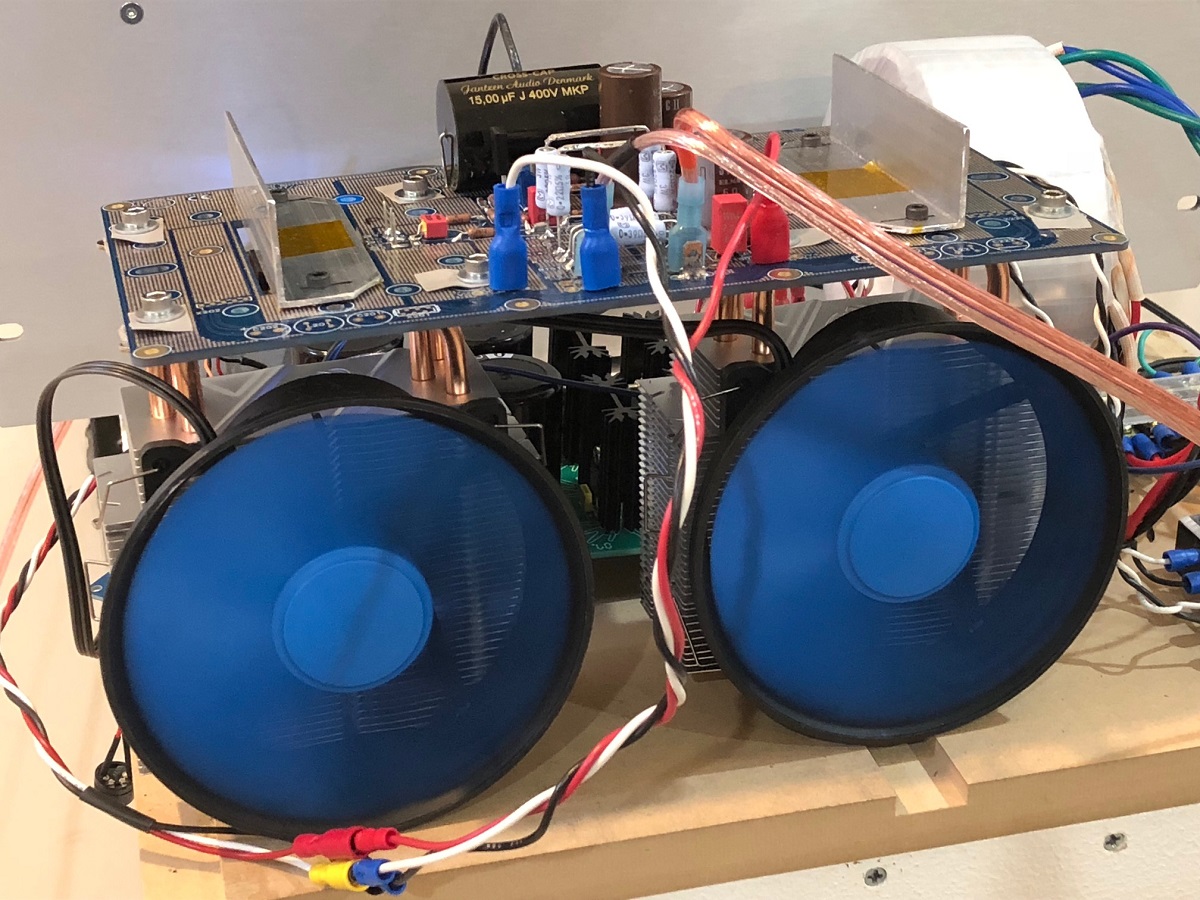
CPU cooler heatpipes - these are PWM fan control motors with separate controller with temp sensor:
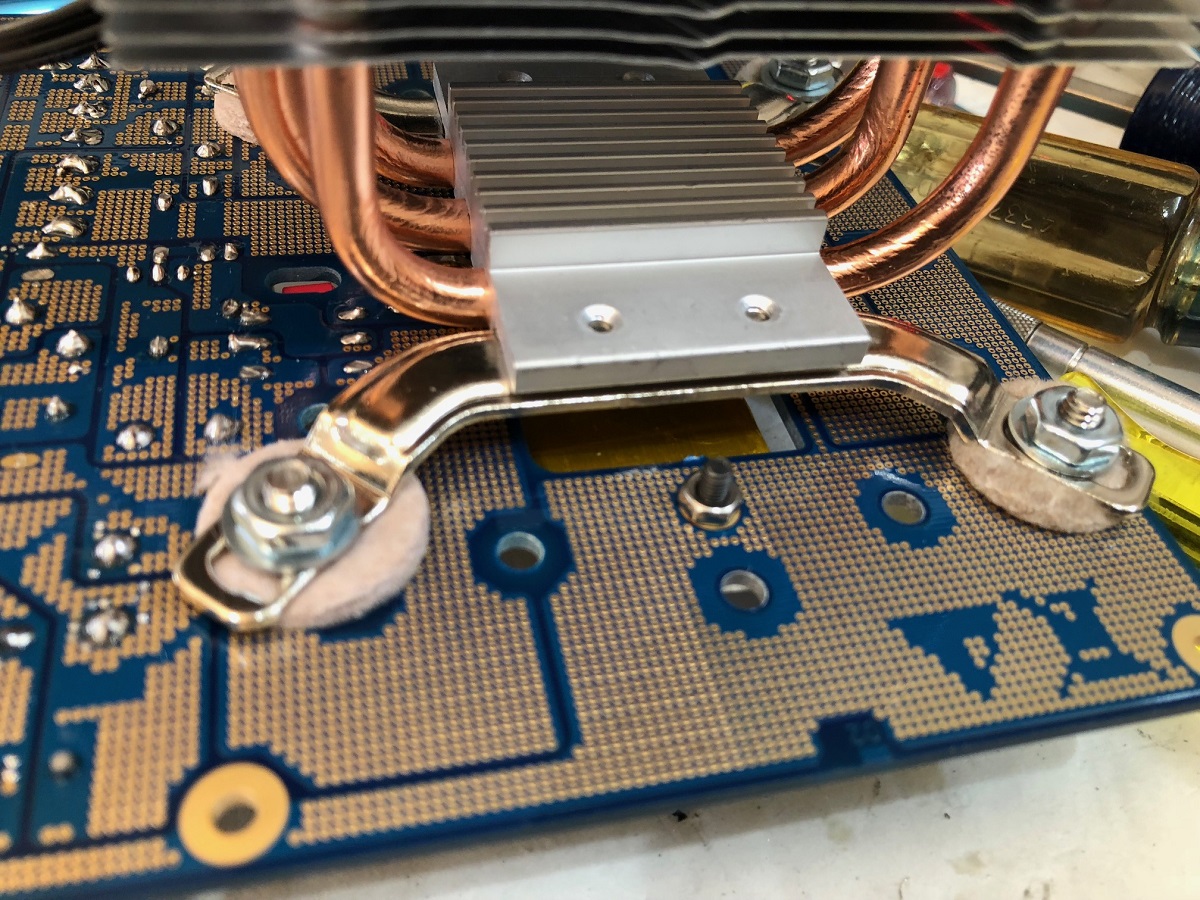
Before installation of MOSFETs:
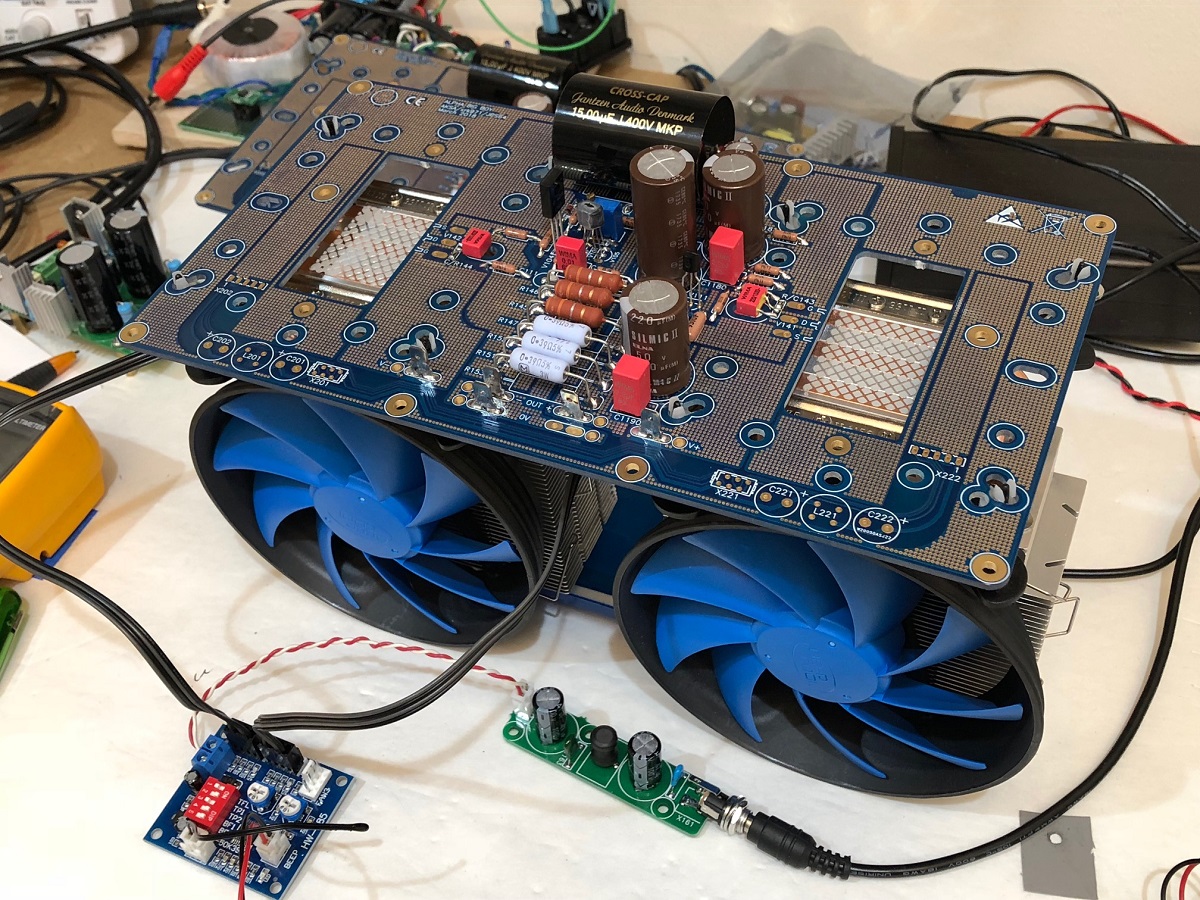
No matching of output devices, each amp uses one IXTK88N30P 88amp n-channel and IXTK90P20P -90amp P-channel MOSFET.
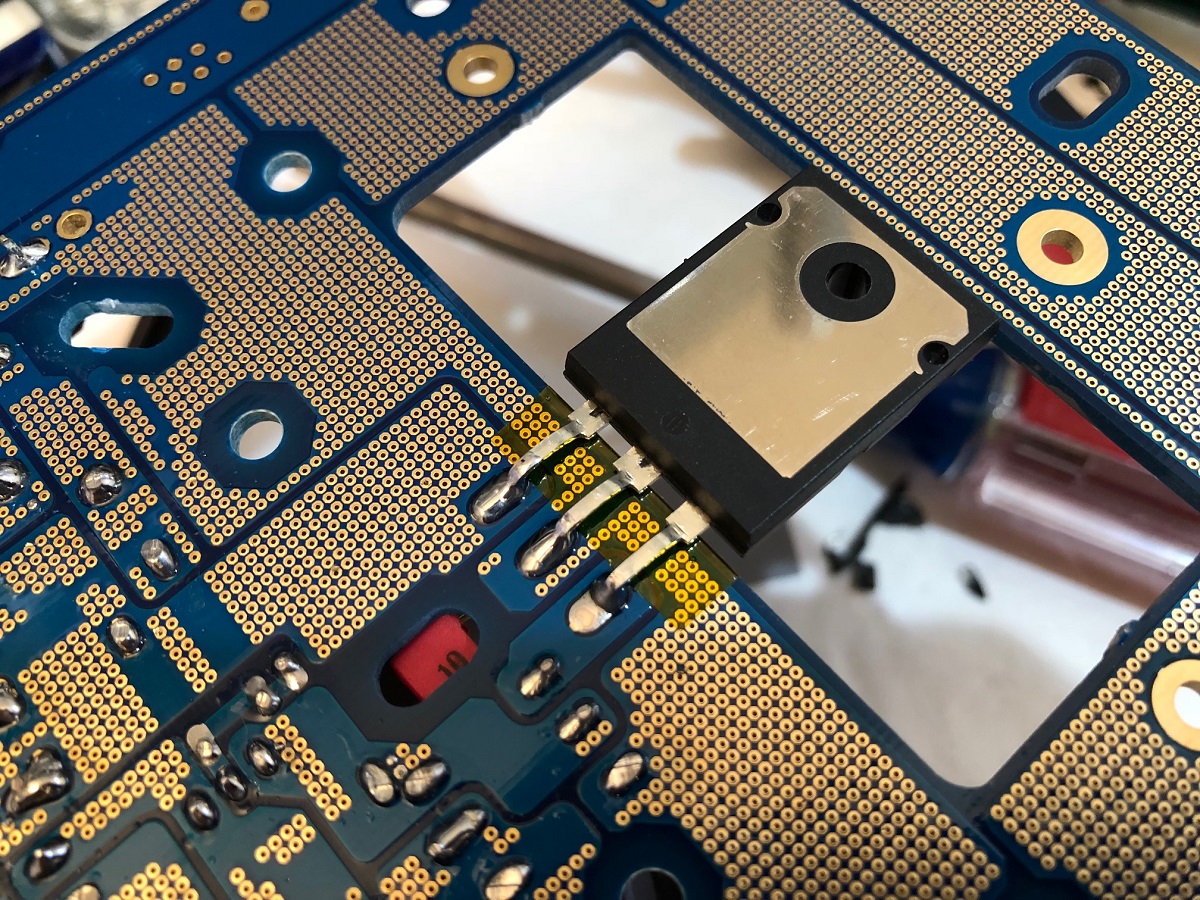
Test case with +/-27.6v rails achieves 33wrms into 8ohms:
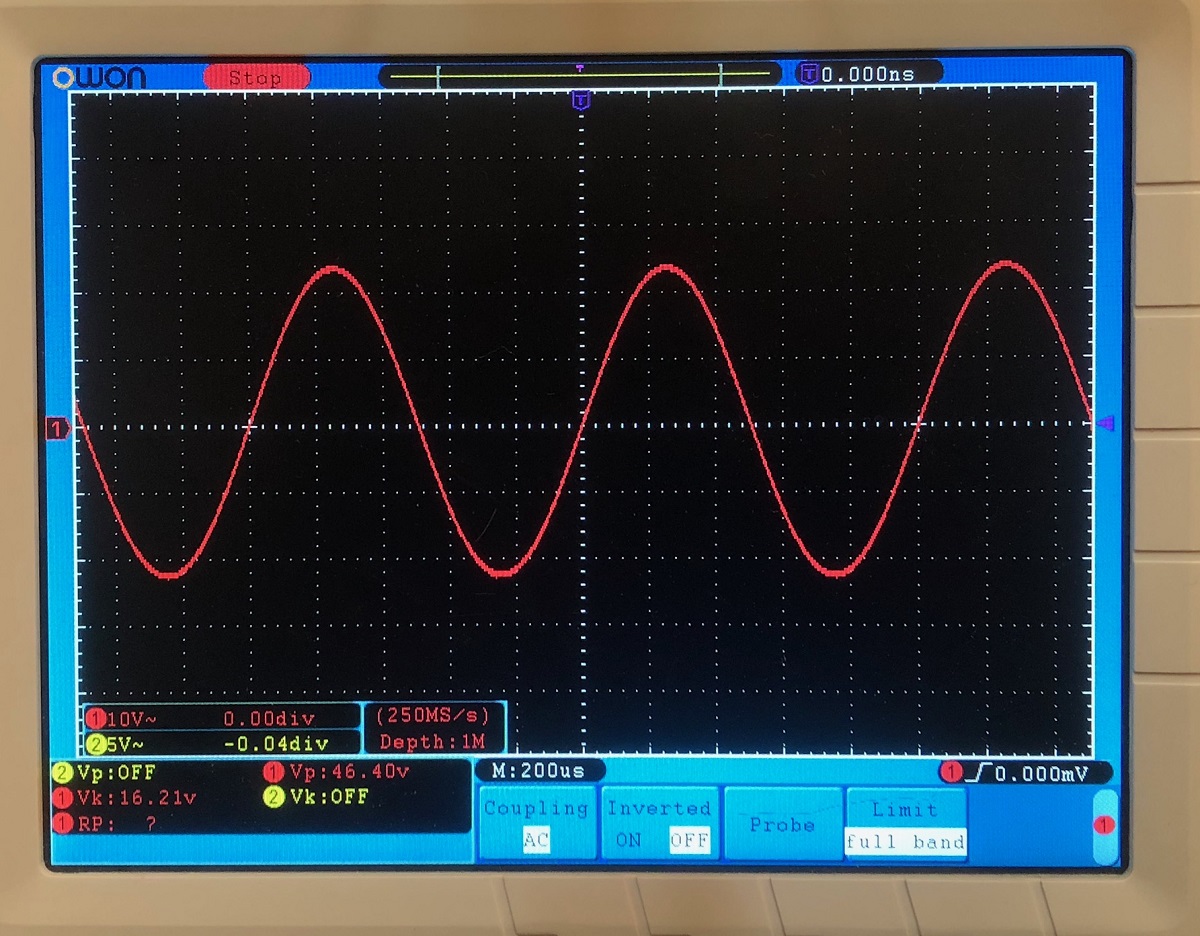
The new ALPHA 52W "Big Boy" (BB) PCB has been verified to work and it sounds fantastic. Runs super cool and quiet with CPU coolers. This is the only way to cool a 220w (per channel) idle dissipation amp. Design is for +/-36v rails at 3amps for 52w into 8ohms. An over-the-top amp that is easy to build and start-up. No adjustments of any kind with rock-stable bias and 0mV DC offset. Pure SE Class A operation and no unobtanium parts required.
Aksa Lender P-mos Hybrid Aleph (ALPHA) Amplifier
MOSFET bodies run cool at 37C and heatsink fins at 30C. No sign of "heat' that is too hot to touch anywhere.
CPU cooler heatpipes - these are PWM fan control motors with separate controller with temp sensor:
Before installation of MOSFETs:
No matching of output devices, each amp uses one IXTK88N30P 88amp n-channel and IXTK90P20P -90amp P-channel MOSFET.
Test case with +/-27.6v rails achieves 33wrms into 8ohms:
Last edited:
Wow, what a lot of vias. Did the board house charge extra for that? I guess these days they’re probably laser cut so it wouldn’t tie up the machinery for too long and wear out too many drill bits.
Wow, what a lot of vias. Did the board house charge extra for that? I guess these days they’re probably laser cut so it wouldn’t tie up the machinery for too long and wear out too many drill bits.
Surprisngly, no. I know that it took them 5hrs to drill the holes for 10 boards. Usually the drill step goes faster. The vias create a porous metal foam like conductor that carries a lot of current. Also prevents peel off. The boards actually weigh more with all the plated metal in the vias vs a non-drilled board.
Careful with that first crosscap....it's highly sensitive at RF......
I was wondering about that, it being so big acts like an antenna. I have an RFI filter right after it though (2k2 and 220pF to gnd).
Alpha BB in glorious stereo!
http://www.diyaudio.com/forums/soli...id-aleph-alpha-amplifier-159.html#post5397638
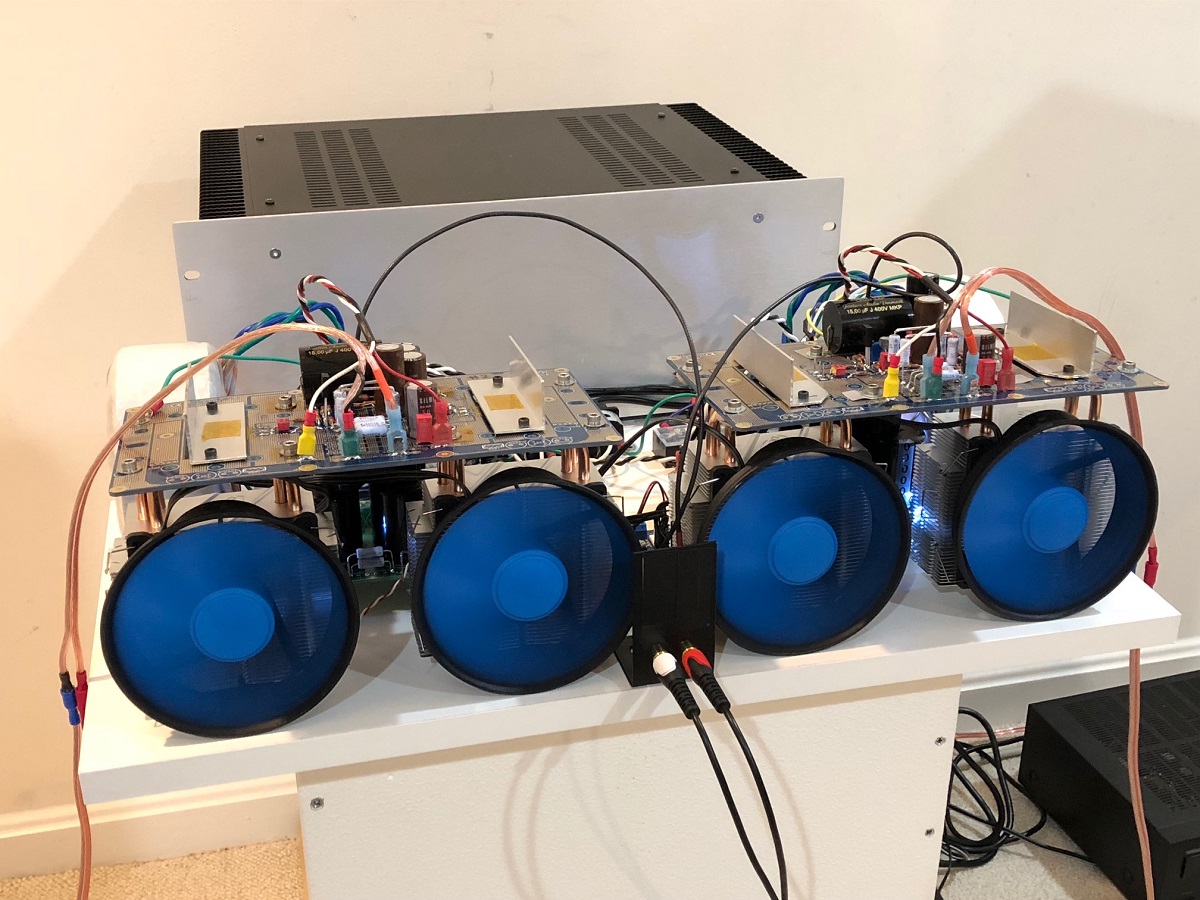
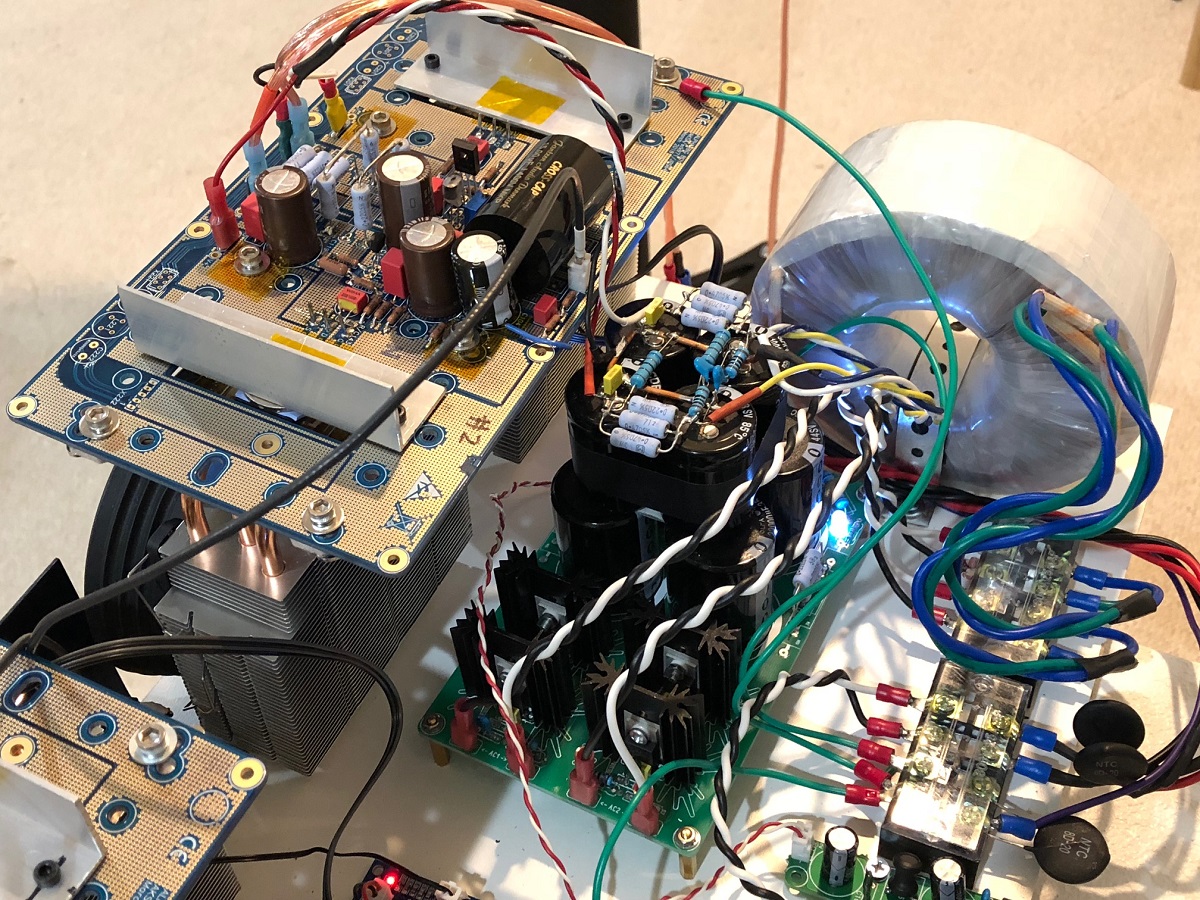
http://www.diyaudio.com/forums/soli...id-aleph-alpha-amplifier-159.html#post5397638
Hi Bogdan,
The PCB isn't perforated. The top side ground plane is. You often see this in products dealing with high frequencies (RF).
-Chris
The PCB isn't perforated. The top side ground plane is. You often see this in products dealing with high frequencies (RF).
-Chris
The million vias connect identical top and bottom layers on high current flow traces and ground plane to make effectively a double conductive metal foam conductor for low impedance. Yes, it is perforated. It helps cooling and prevents peel off as well.
I stand corrected then. It looks identical to a straight forward RF ground plane.
-Chris
The connected plane vias (perforations) are JPS64’s idea. He may have gotten it from RF design as he does that too.
Here is a closeup near one of the outputs:
Now I can see they are vias. I can't imagine how much that PCB is really worth to make. I don't see you being able to have these made for normal pricing.
-Chris
-Chris
Very well done PCB and thermal solution, congratulations. This metallic vias are done without any overprice in China, where 10x10cm PCB cost 20 cents. I have another question. Is it worth to force only one parameter of quality, passing thru 0V with such as huge bias? What is about fastness (min. 200V/microsec), lowering dumping factor (250 or more), linearization from 0Hz to 200 kHz and totally symmetrical scheme in front off classic? I am going this way last 30 years.
Now I can see they are vias. I can't imagine how much that PCB is really worth to make. I don't see you being able to have these made for normal pricing.
-Chris
I was pretty skeptical about cost too but apparently the holes are laser drilled by robots. No extra cost from China board houses.
This metallic vias are done without any overprice in China, where 10x10cm PCB cost 20 cents. .
Does it matter if the shipping costs $25 ???
- Home
- Amplifiers
- Solid State
- Post your Solid State pics here